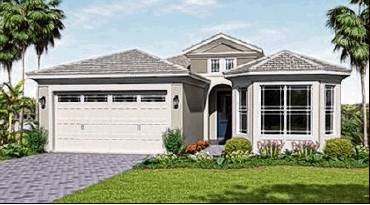OUR VIEWS WORKFORCE HOUSING CRISIS
Builders must step up, create housing that is affordable
For years, judging by the attitudes and actions of builders and developers, you’d think there was no workforce housing crisis in Palm Beach County. That the county’s median single-family home price of $335,000 is not out of reach of 75 percent of its households. And that it’s of no real consequence to them.
Those builder attitudes and actions may be changing — albeit slowly — for the better.
We know that there is a crisis-level shortage of workforce housing because our companies’ college-educated, 30-something millennial employees tell us so. The barrier is not just a new starter home’s unattainable price tag, but its hefty down payment.
County officials have long recognized this problem. So have a growing number of municipalities. They’ve offered initiatives and incentives to make more of our housing stock affordable to white-collar professionals such as teachers, assistant public defenders, nurses and store managers. Employers and business development leaders have also fretted about recruiting and retaining talent, knowing there are other desirable markets with more affordable housing like Fort Myers, The Villages, Orlando and Tampa.
Missing has been recognition by the county’s builders and developers that they also have skin in this game. And sans that recognition, the workforce housing crisis is destined to get worse.
So we were encouraged in July, when Tamarac-based builder 13th Floor Homes began marketing 250 new single-family houses starting at an “affordable” $278,900 at its Arbor Parc, off of Military Trail just west of I-95 and just north of Blue Heron Boulevard. It’s a start.
We were further encouraged when John F. “Jack” Weir, president of Eastwind Development in Palm Beach Gardens, acknowledged in a July 16 Post op-ed that a “workforce housing” problem exists and put forth solutions to help tame the issue.
And last week, Minto Communities presented a plan to entice middle-class homebuyers with down payment grants of 3 percent of the purchase price at its massive new Westlake development in western county.
Minto Communities USA President Mike Belmont called the program’s funding source — a $1,500 fee on every sale and resale in Westlake — “both creative and necessary as state and county programs for affordable housing simply haven’t proven sufficient.”
This is not far from business as usual for homebuilders. For decades, they have been practically monolithic in tying the high prices of new homes to impact fees and other government-imposed costs. That position has become increasingly tenuous given the substantial spike in both home sales — and prices — since the Great Recession.
We don’t mistake Minto’s forward-thinking program for altruism. This is a business decision meant to sell homes —4,500 of them over the next two decades. And there’s nothing wrong with that.
Nor do we see Minto’s program as a panacea. While a laudable move in the right direction, the $276,000 starting price of Westlake’s homes — $276,000 — is at the top of what is considered workforce housing. For example, a household with a $125,000 income would be able to afford that minimum price. But even after help with 3 percent of the down payment, that leaves them coming up with nearly $47,000 if a lender wants what has become a standard 20 percent down payment.
There aren’t too many 30-something middle-class households that can scrape together that kind of cash. And those that can, shouldn’t end up “house poor,” struggling to pay a mortgage and homeowners association dues.
To make a dent in our workforce housing shortage, we need homes built in the $160,000-$240,000 price range. For that to happen, we need other mega-builders to follow Minto’s lead in seeking answers to the affordability dilemma.
They should heed the words of Economic Council President and CEO Michael DeBock, who wrote in a letter to the editor: “Affordable workforce housing remains a critical issue. ... Developing an appropriate mix of housing options for our county’s workforce is essential to our future. ... However, it will take a strong partnership between local government and business leaders to make this vision a reality.”
Right. And there’s plenty more room at the table.
To make a dent in our workforce housing shortage, we need homes built in the $160,000-$240,000 price range.
